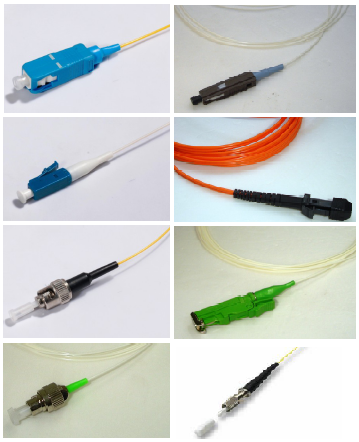Fiber Optic pigtail is a piece of fiber optic cable terminated at one end with a fiber optic connector.
FO pigtails are used to link the fiber optic cable with a fiber optic equipment, the connector at one end is used to link the equipment, while the other end is melted together with a fiber cable.
The most common types of FO pigtails have a fiber cable diameter of .9mm
Fiber optic pigtail Specifications (example):
Types: single mode, multimode
Terminations: FC, SC, ST, MU, LC, D4, DIN, E2000, MT-RJ, MPO, SMA, E2000, FDDI, and ESCON
Insertion Loss (dB): less than 0.2 (PC and UPC)
Exchangeability: less than 0.2 dB
Tensile Strength: less than 0.2 dB (0 to15 kgf)
Temp. Range: (- 40 to +80 degree centigrade)

.png)


